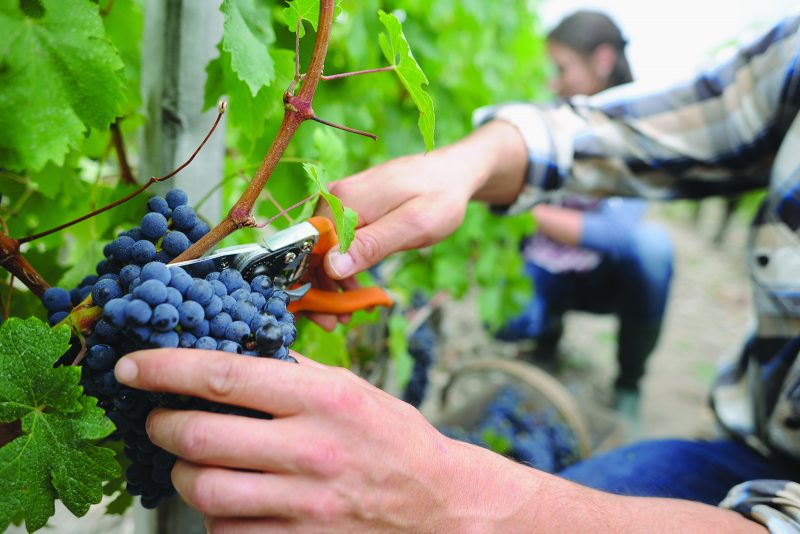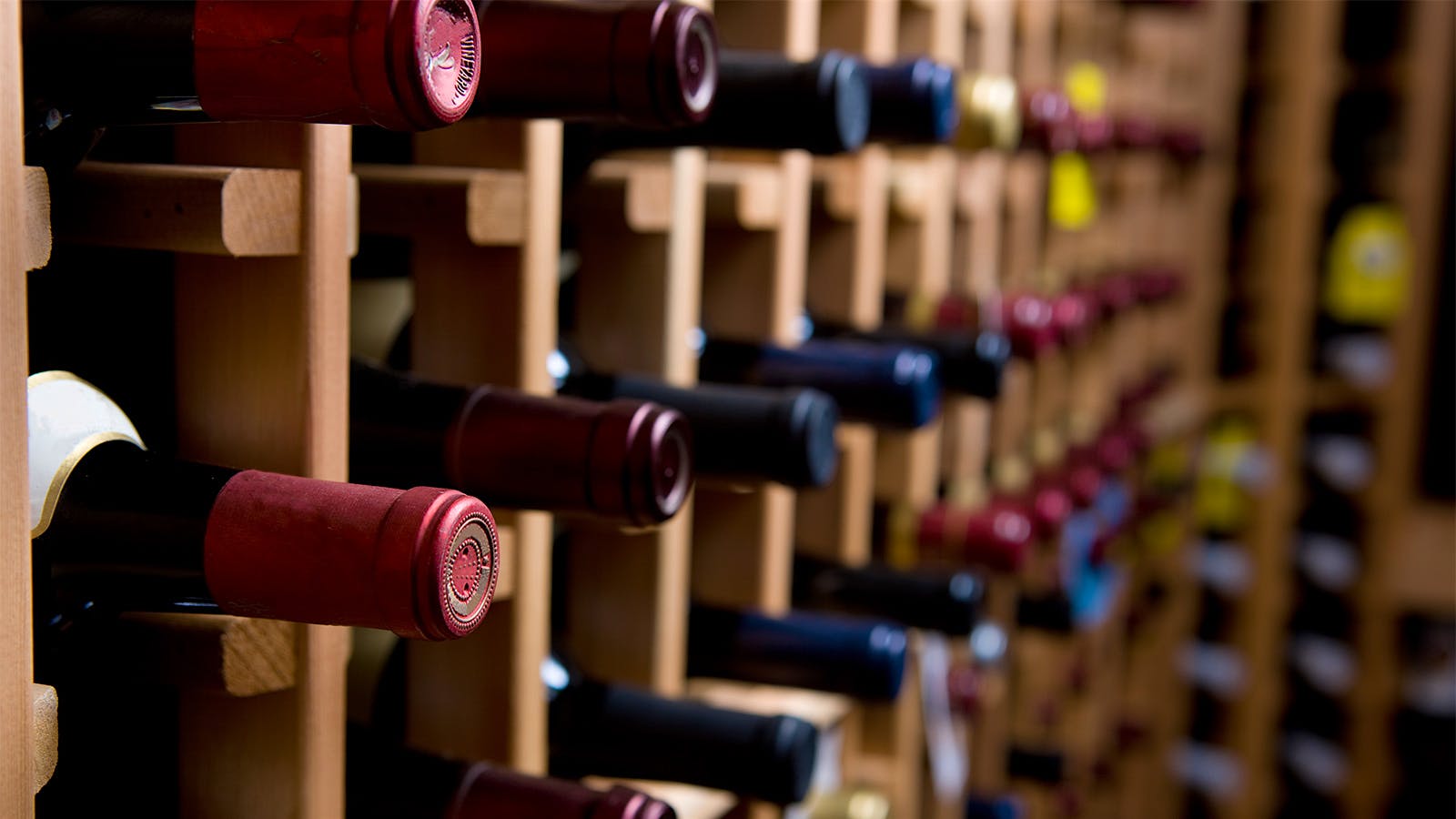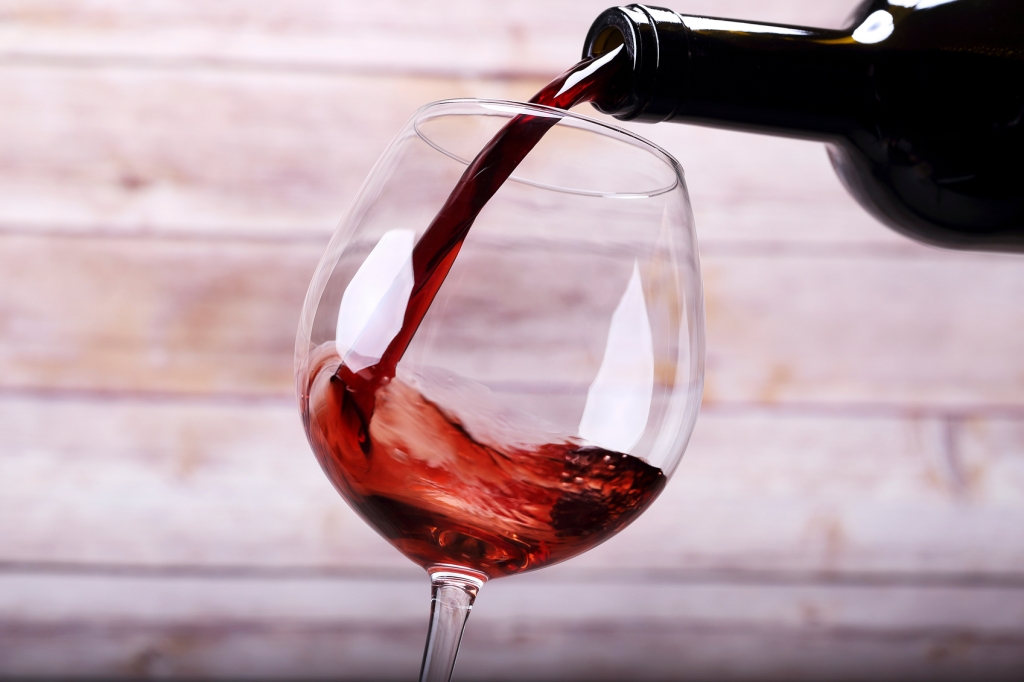Wines come in so many varieties! There’s red, white, rosé, sparkling, ice, sweet, and fortified. Each is crafted in a slightly different way. In a previous discussion, we touched on the differences between red and white wines, briefly mentioning the winemaking process. This time, we’ll delve into the specific winemaking process for red wine. Let’s explore how it’s crafted and why it ends up being red!

It’s primarily divided into 11 different steps:
- Grow Grapes & Harvest
- Destem
- Crush
- Pre-Fermentation
- Fermenting
- Press
- Malolactic fermentation
- Blend & Racking & Aging
- Fining & Clarification
- Filtration & Bottling
- Storage
Let’s take a look at this image—it’s drawn very clearly.

1.Grow Grapes & Harvest
Northern Hemisphere Grape Growth Annual Cycle:
- October: Harvest
- October to February: Too cold, dormant
- March to April: Bud growth
- May: Flowering
- June: Fruit set
- July to August: Ripening
Southern Hemisphere Grape Growth Annual Cycle:
- March to April: Harvest
- April to August: Too cold, dormant
- September to October: Bud growth
- November: Flowering
- December: Fruit set
- January to February: Ripening
In essence, grapes need dormancy. Grapes that experience dormancy have more texture and structural complexity in their juice, avoiding a flat taste.

2.Destem
Destemming is a crucial step as it prevents the grape juice from becoming too bitter. It’s done to enhance quality and improve the taste.

3. Crush
it’s squeezing the juice out.

4. Pre-Fermentation
Soaking increases tannins, body, and color. Broken grape skins produce carbon dioxide, naturally initiating fermentation.
5. Fermentation
‘Must’ refers to grape juice.
Alcoholic fermentation is the process of turning sugars into alcohol.
Usually, commercial yeast is added, though sometimes natural fermentation occurs.
Different strains of yeast contribute to different flavours.
6.Press
Next, there will be free-run juice and pressed juice, separating the skins from the juice. Free-run juice is sometimes blended with white wine, creating rosé.
7. Malolactic fermentation
Secondary fermentation converts high acidity malic acid into lactic acid, resulting in a smoother, milder taste.
8. Blend & Racking & Aging
The free-run juice and the typically pressed juice are blended together and aged in oak barrels.
9. Fining & Clarification
Sometimes, additives like egg whites, copper sulphate, and milk powder may be used.
10. Filtration & Bottling
Some wines opt to skip the filtration process to enhance flavors and complexity. Filtering can sometimes remove certain additives that might affect the wine’s inherent taste.
Typically, higher-value wines may not undergo clarification and filtration, being bottled directly.
11. Storage
After bottling, wine should be stored at a temperature of 16-18 degrees Celsius and kept away from sudden temperature fluctuations.
Additionally, it should be laid horizontally to allow the cork to soak in the liquid and expand, completely sealing off any air exchange between the inside and outside of the bottle.

Adding a point:
The carbonic maceration method is more suitable for grapes with a lighter body, such as Pinot Noir or Gamay.
Usually, this method skips the destemming process and ferments the grapes as they are.
Carbonic maceration is a winemaking technique where whole grapes are fermented in a carbon dioxide-rich environment before they are crushed. This process often results in wines with softer tannins and vibrant fruit flavours.
Finally, thank you for taking the time to read the entire article! I hope it provided you with a good understanding of the red wine-making process. Now tell me, What’s your preference between red and white wine?
– END –


Leave a comment